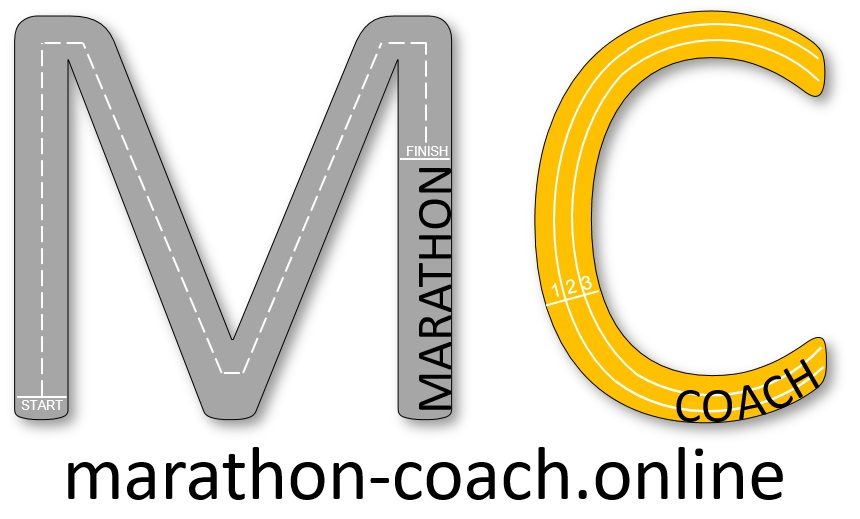Running a marathon is a great achievement, but it also takes a toll on your body. You need to give yourself enough time to recover and restore your energy levels, muscle strength, and cardiovascular fitness. I always get questions by athletes “how long should I rest after a marathon?”, or “Coach, should I train back the week after the marathon?”

In this blog post, I will explain how to have a two-week break after a marathon and how to start back running with a lower VO2max.
What is VO2max?
VO2max is the maximum amount of oxygen your body can use during intense exercise. It is a measure of your aerobic capacity and endurance. The higher your VO2max, the faster and longer you can run.
VO2max is influenced by many factors, such as genetics, age, gender, training, altitude, and health conditions. It can also vary from day to day depending on your hydration, nutrition, sleep, stress, and motivation.
How does a marathon affect your VO2max?
Running a marathon requires a high level of aerobic endurance and puts a lot of stress on your muscles, joints, tendons, ligaments, and bones. It also causes inflammation, oxidative stress, and immune system suppression. All these factors can temporarily reduce your VO2max after a marathon.
During the last month of Marathon training, athletes are limiting their running at VO2max intensity.
Studies have shown that VO2max can drop by 5-10% in the first week after a marathon and by 2-5% in the second week. This means that you will not be able to run at the same pace and intensity as before the marathon for a while.
How to recover and restore your stamina after a marathon?
The best way to recover and restore your VO2max after a marathon is to take a two-week break from running and follow these steps:
- Rest: For the first three days after the marathon, avoid any strenuous physical activity and focus on resting and sleeping. This will help your body heal and repair the damage caused by the marathon. I suggest athletes to allow 2 weeks of full rest with no activity at all. You deserve it after months of hard training.
- Hydrate: Drink plenty of water and fluids to replenish your lost electrolytes and prevent dehydration. You can also drink sports drinks, juices, or smoothies to boost your carbohydrate intake and energy levels.
- Eat: Consume a balanced diet rich in carbohydrates, protein, healthy fats, vitamins, minerals, and antioxidants. Carbohydrates will replenish your glycogen stores, protein will support your muscle recovery, healthy fats will reduce inflammation, and antioxidants will combat oxidative stress. Avoid alcohol, caffeine, processed foods, and refined sugars as they can impair your recovery.
- Stretch: After the first three days of rest, you can start doing some gentle stretching exercises to improve your blood circulation, flexibility, and range of motion. You can also do some yoga or pilates to relax your mind and body.
- Massage: Getting a massage or using a foam roller can help ease your muscle soreness, stiffness, and tightness. It can also stimulate your lymphatic system and flush out the toxins and waste products from your body.
- Cross-train: After the first week of rest, you can start doing some low-impact cross-training activities such as cycling, swimming, walking, or elliptical. These will help you maintain your cardiovascular fitness and muscle tone without putting too much stress on your joints and bones.
- Run: After the second week of rest, you can start running again. You should start with short and easy runs (20-30 minutes) at a conversational pace (60-70% of your maximum heart rate). Gradually increase your distance and intensity over the next few weeks until you reach your pre-marathon level.
How to prevent losing too much VO2max after a marathon?
While some loss of VO2max after a marathon is inevitable and normal, you can minimize it by following these tips:
- Train properly: Follow a well-designed training plan that includes adequate mileage, intensity, recovery, tapering, and nutrition. This will help you build up your aerobic capacity and endurance before the marathon and reduce the risk of overtraining and injury.
- Pace yourself: Run the marathon at a realistic pace that matches your fitness level and goal time. Do not start too fast or too slow as this can affect your oxygen consumption and energy expenditure. Use a GPS watch or a pace band to monitor your pace and adjust it accordingly.
- Recover properly: Follow the steps mentioned above to recover and restore your speed after the marathon. Do not resume running too soon or too hard as this can delay your recovery and cause more damage to your body.
Detail training plan for the 6 weeks after the marathon
WEEK 1 – REST
Well done on your marathon. Take time to celebrate and catch up with family / friends.
WEEK 2 – REST
Continue to relax, read a book…

WEEK 3 – BASE TRAINING 1
Let start back training with short and slow session. Your fitness will come back but start back with Thershold that is 15 seconds slower than your previous sessions during marathon training.
It is important to add 2 sessions of Strength and Conditioning during this period.
| WEEK 3 (3 sessions per week) |
| REST |
| 30’ Easy jog + 4 strides |
| REST |
| 10’ warm-up + 2 x 1mile @ Threshold pace, REST 1’ between each mile + 10’ cool-down |
| REST |
| REST |
| Long run 40’ @ Easy pace |
| WEEK 3 (6 sessions per week) |
| 30’ Easy jog + 4 strides |
| REST |
| 10’ warm-up + 2 x 1mile @ Threshold pace, REST 1’ between each mile + 10’ cool-down |
| 30’ Easy jog + 4 strides |
| 10’ warm-up + 4 x 1km @ Threshold pace, recovery 200m @ Easy pace between each km + 10’ cool-down |
| 30’ Easy jog + 4 strides |
| Long run 40’ @ Easy pace |
WEEK 4 – BASE TRAINING 2
During the second week, the sessions are very similar. No need to increase too much. You should concentrate on your running form. Keep running at your threshold pace (15 seconds per kilometre slower than during the marathon training).
It is important to add 2 sessions of Strength and Conditioning during this period.
| WEEK 4 (3 sessions per week) |
| REST |
| 30’ Easy jog + 6 strides |
| REST |
| 10’ warm-up + 4 x 1km @ Threshold pace, REST 1’ between each mile + 10’ cool-down |
| REST |
| REST |
| Long run 40’ @ Easy pace + 6 strides |
| WEEK 4 (6 sessions per week) |
| 30’ Easy jog + 6 strides |
| REST |
| 10’ warm-up + 2 x 1mile @ Threshold pace, REST 1’ between each mile + 10’ cool-down |
| 30’ Easy jog + 6 strides |
| 10’ warm-up + 6 x 1km @ Threshold pace, recovery 200m @ Easy pace between each km + 10’ cool-down |
| 30’ Easy jog + 6 strides |
| Long run 40’ @ Easy pace |
WEEK 5 – BASE TRAINING 3
The training is continuing at the same pace, including now some hills strides to improve your running form:
| WEEK 5 (3 sessions per week) |
| REST |
| 30’ Easy jog + 8 hills strides |
| REST |
| 10’ warm-up + 3 x 1mile @ Threshold pace, REST 1’ between each mile + 10’ cool-down |
| REST |
| REST |
| Long run 40’ @ Easy pace + 8 strides |
| WEEK 5 (6 sessions per week) |
| 30’ Easy jog + 8 hills strides |
| REST |
| 10’ warm-up + 3 x 1mile @ Threshold pace, REST 1’ between each mile + 10’ cool-down |
| 30’ Easy jog + 8 strides |
| 10’ warm-up + 6 x 1km @ Threshold pace, recovery 200m @ Easy pace between each km + 10’ cool-down |
| 30’ Easy jog + 8 hills strides |
| Long run 40’ @ Easy pace |
WEEK 6 – BASE TRAINING 4
For the last week of the base, it is good to plan a short 5km race to understand the fitness level and better plan the training paces for the following weeks. You can plan a VO2max test or a Lactate Threshold test alternativelly.
| WEEK 6 (3 sessions per week) |
| REST |
| 30’ Easy jog + 8 strides |
| REST |
| 30’ Easy jog + 4 strides |
| REST |
| 15’ warm-up + 5 x 100m @ Interval pace, recovery 100m @ Easy pace between each 100m + 5’ cool-down |
| 2km Easy warm-up + 5km RACE + 2km cool-down |
| WEEK 6 (6 sessions per week) |
| 30’ Easy jog + 8 strides |
| REST |
| 10’ warm-up + 3 x 1mile @ Threshold pace, REST 1’ between each mile + 10’ cool-down |
| 30’ Easy jog + 4 strides |
| REST |
| 15’ warm-up + 5 x 200m @ Interval pace, recovery 200m @ Easy pace between each 100m + 5’ cool-down |
| 2km Easy warm-up + 5km RACE + 2km cool-down |
After these 6 weeks, you should be in good shape to start to train for your next goal race.
Conclusion
Running a marathon is an amazing experience that challenges your physical and mental limits. However, it also lowers your VO2max temporarily. To recover and restore your speed after a marathon, you need to take a two-week break from running and follow a proper base training plan that includes rest, hydration, nutrition, stretching, massage, cross-training, and easy running. By doing so, you will be able to bounce back stronger and faster than ever.
